A simple evolutionary pattern: the harsher the conditions, the harsher the plants. And in the desert, the conditions are just brutal, so they've encased themselves in a thick leathery shell and grown thorns up to the flowers. Camels, however, don't give a damn about all these tricks from their height. But it's not entirely clear: how exactly did they adapt to eating cacti? 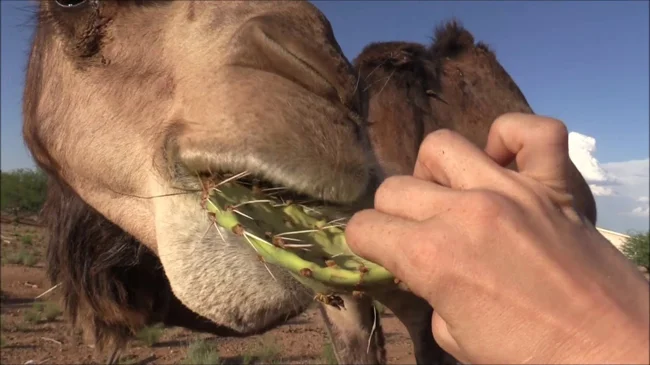
So that's what they are, lovers of spicy food. 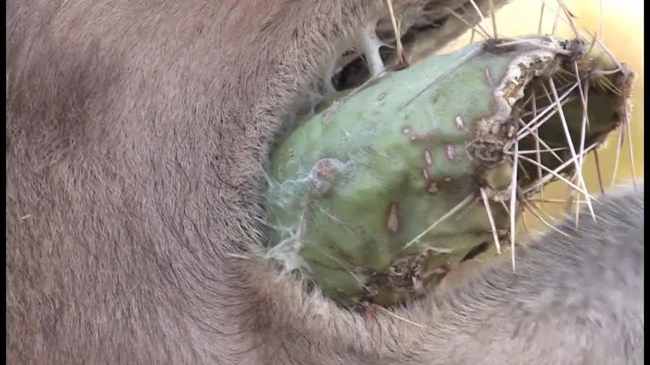
The camels did not cry, did not prick themselves, but continued to eat the cactus.
Adaptation one: mobile lips
Instead of biting plants with their teeth and exposing the outer side of their gums to pricks, camels grab dangerous greenery with their mobile lips and only then redirect it to their teeth. The lips themselves are not in any danger: even on the inside they are covered with skin, and not with a soft mucous membrane, like ours. 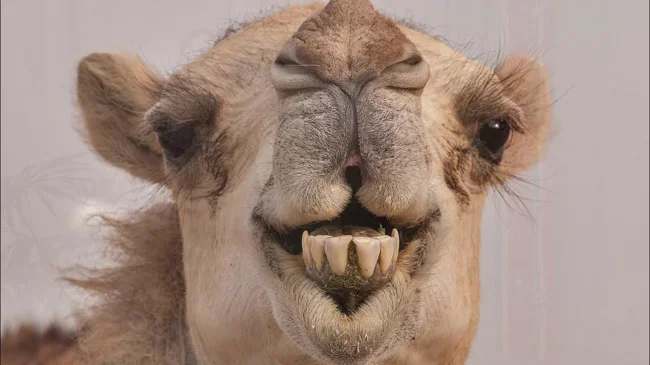
The upper lip of the humpback is divided into 2 separate parts that can move independently of each other, like the fingers of one hand. Plus, there is also a bristle of stiff hair on the lips.
Adaptation two: a palisade of teeth
30 wide and flat teeth can chew through almost anything, especially in tandem with powerful jaw muscles. The hard covers and most of the spines are rubbed and torn until they become safe. Another 4 teeth, powerful and large fangs, are practically not involved in neutralizing plant protection. They are needed for self-defense and fights with other camels. So don't even think about biting a camel! You won't like the response! 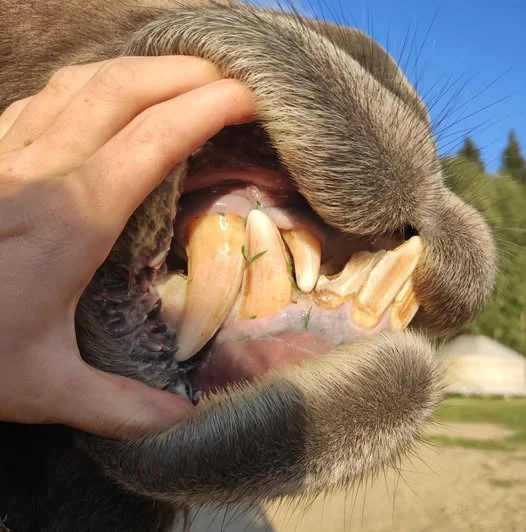
Yes, he is definitely a herbivore. Don't believe what your instincts are telling you right now.
Adaptation three: a spiky mouth
The oral cavity of camels is abundantly strewn with hard leathery spines, each several centimeters long - you can't think of a better defense against thorns! The mucous membrane on the spines is thickened to the point of being almost impenetrable, so it perfectly protects softer tissues from damage. In addition, the spines are pointed inward, so spicy food slides down their throat like a sled. And the tongue acts as an engine. 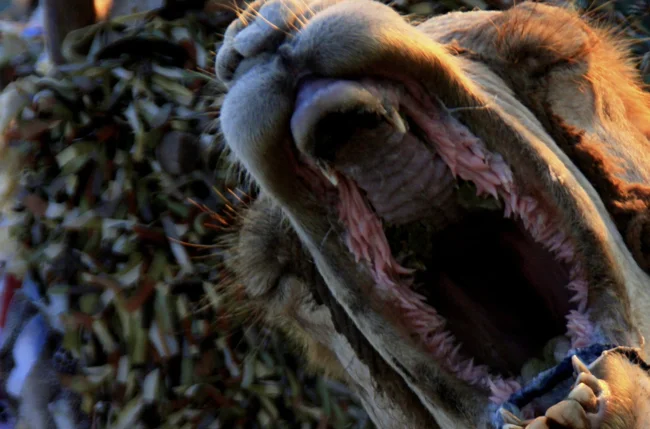
Come on, tell me this isn't a scene from a horror movie...
The tongue itself is a dense and muscular appendage, rough even to the touch. Its surface is covered with several layers of protective cells with a fibrous base underneath. Such armor is impossible for puny plants to penetrate. True, this modification has its consequences: the tongue is almost completely devoid of taste buds and therefore does not sense tastes. A fair price for the ability to eat inedible food. 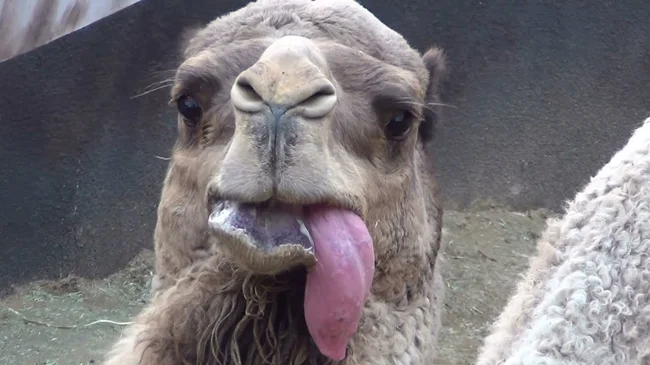
Ate the cake, but did not feel anything :(
Adaptation number four: a powerful throat and a strong stomach
Even if something prickly and potentially dangerous managed to penetrate lower, the camel's insides still remain completely safe. The multilayered epithelium of the esophagus and rumen - the first section of the three-chambered stomach of camels - protects the organs from damage excellent. 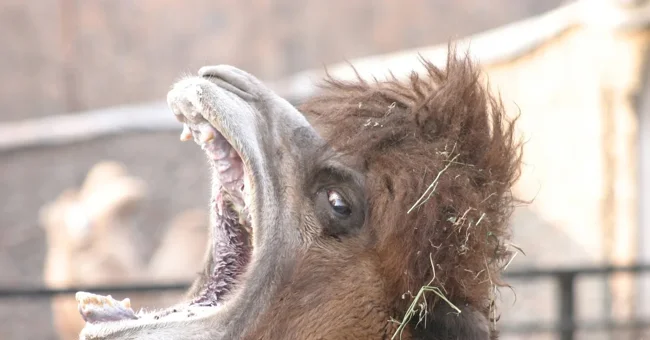
Put the food in the spiked food receptacle.
There was a hitch with the last one, though. In normal mammals, like us, the single-layer mucous membrane of the stomach is strewn with millions of microscopic glands that secrete gastric juice that dissolves food. But you can't hide the glands in the multilayer epithelium of camels. Therefore, herbivores collected them in 3 large areas that not only secrete everything necessary for digestion, but also store water, which the camel needs to survive - another defense mechanism against dehydration. 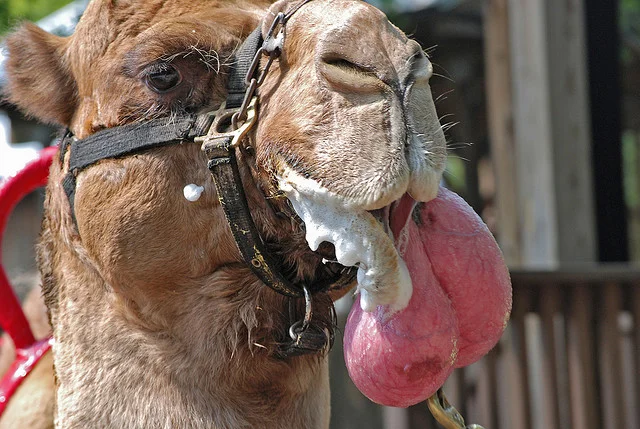
A camel's stomach looks pretty nasty both on the outside and on the inside. That's why we won't show it to you. But we will show you the dulla, an outgrowth of the soft palate. If you see it, it means the male wants to reproduce and is subtly hinting at it.
Basically, camels have turned their digestive system into a rough sack that first deals with a potential threat and only then digests it. Well, the fact that they had to compromise in the process is not that important. The main thing for evolution is that animals can survive and leave offspring. The rest is their problem.
Add your comment
You might be interested in:






























